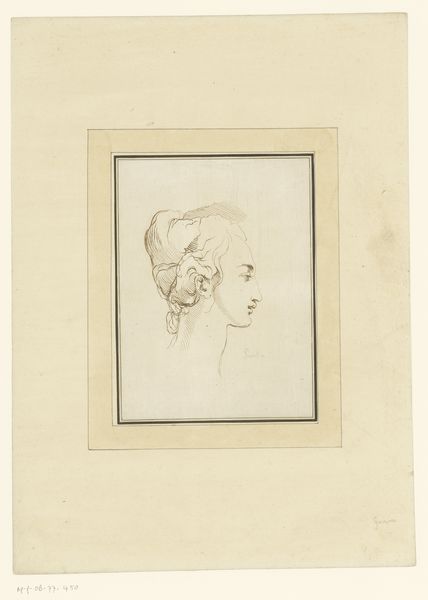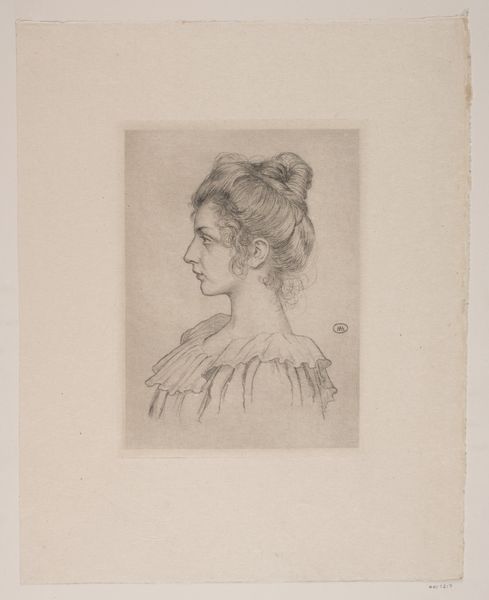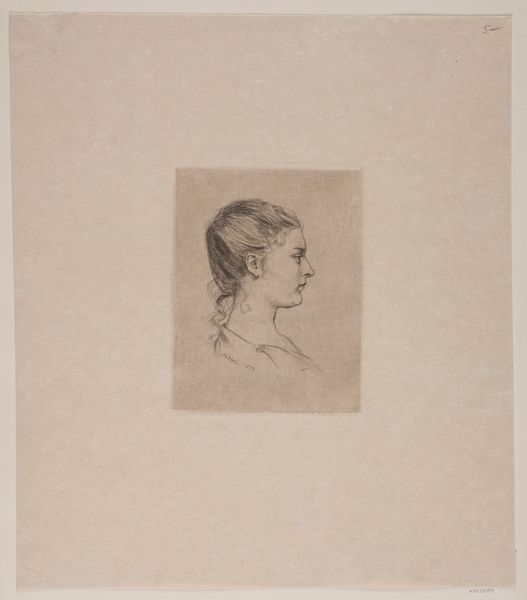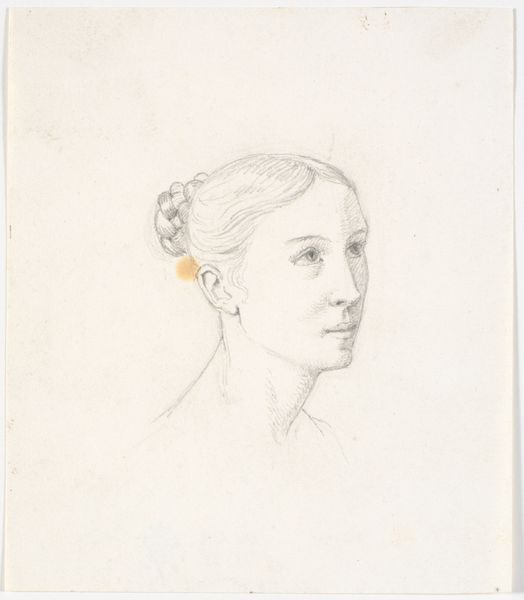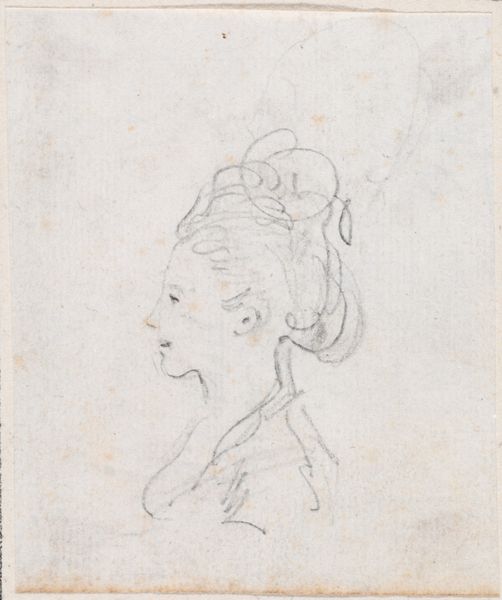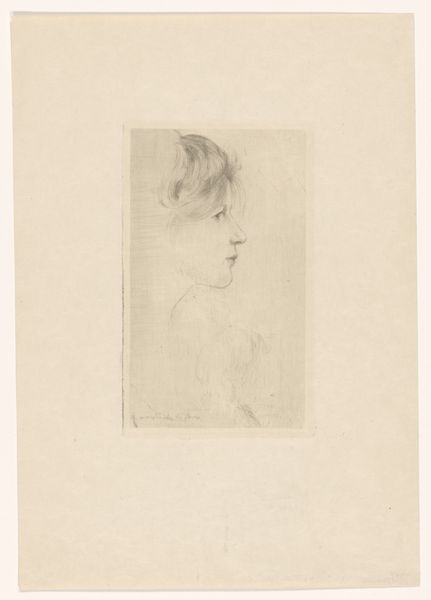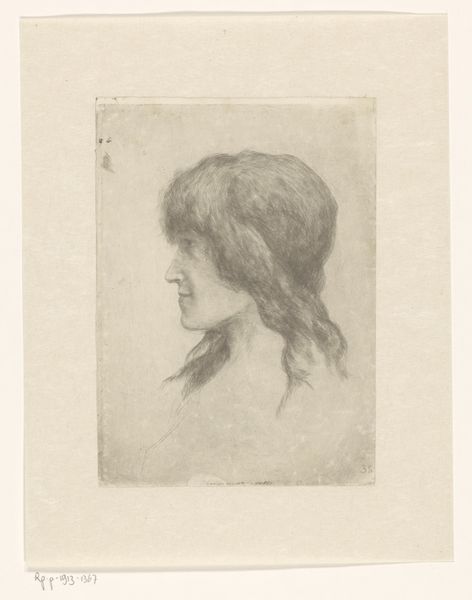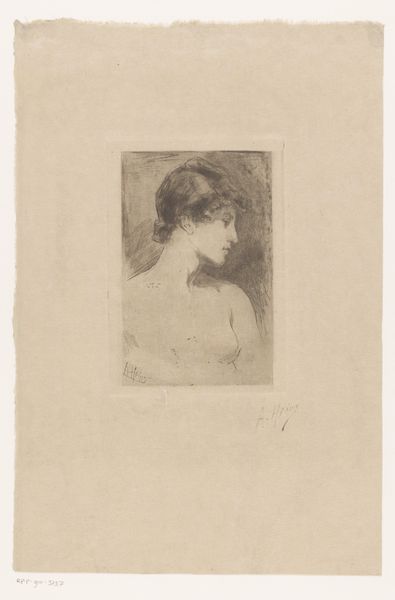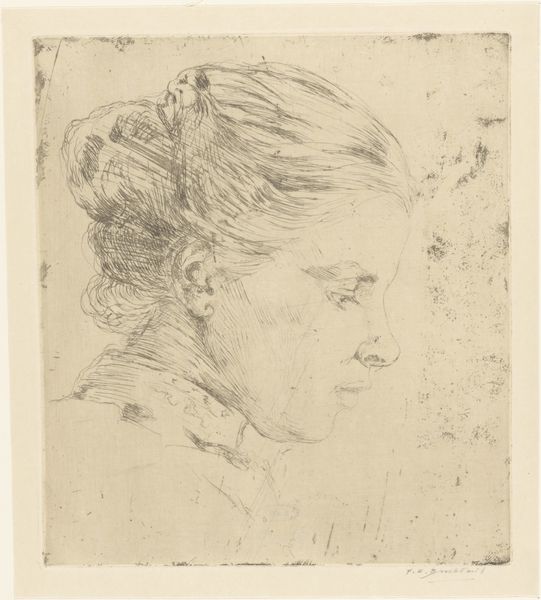
drawing, etching, pencil
#
portrait
#
pencil drawn
#
drawing
#
etching
#
etching
#
pencil
#
realism
Dimensions: height 179 mm, width 138 mm
Copyright: Rijks Museum: Open Domain
Curator: This delicate drawing, dated between 1917 and 1919, is entitled "May d'O," by Philip Zilcken, and can be found here at the Rijksmuseum. It’s rendered primarily in pencil and etching. What strikes you about it initially? Editor: There’s an ethereal quality. The delicate lines almost fade into the background. The sitter appears quite pensive, detached even. It gives the sense of capturing a fleeting moment of quiet introspection, a specific female gaze. Curator: It's interesting you say that, given the period it was produced in. Consider the broader socio-political backdrop – the end of World War I, the burgeoning women's suffrage movement. Do you think Zilcken's "May d'O" could perhaps offer insight into the shifting role of women at that time? Editor: Absolutely. It’s easy to see her almost as a symbol. The restraint, the barely-there quality, could reflect how women were often overlooked or subtly subjugated, even while fighting for greater agency. Was this a commission? A muse? What power dynamic existed here? Curator: Details surrounding Zilcken's relationship with the sitter, May d'O, remain elusive. However, looking at the historical context, Zilcken worked largely as a portraitist of upper middle class individuals. His patrons moved in elitist social circles during a period of major transformation. The subtle realism and technical skill speak volumes about the cultural milieu. Editor: I can’t help but consider her averted gaze in relation to Laura Mulvey's theories. Is she meant purely for the male gaze, or does Zilcken attempt to capture a different kind of subjecthood? How much agency did she truly possess within this representation? The faint quality of the image could indicate how transient and elusive women’s social standing was during this time. Curator: These are all incredibly relevant avenues of inquiry. Thank you, in particular, for the reminder to situate the politics of gender and class within this piece. I think, looking at it through this lens, the artwork's real complexities surface, making it far more compelling than a simple portrait of a society lady. Editor: Indeed, recognizing these complexities, hopefully it will incite our audiences to think deeper and find multiple readings.
Comments
No comments
Be the first to comment and join the conversation on the ultimate creative platform.
